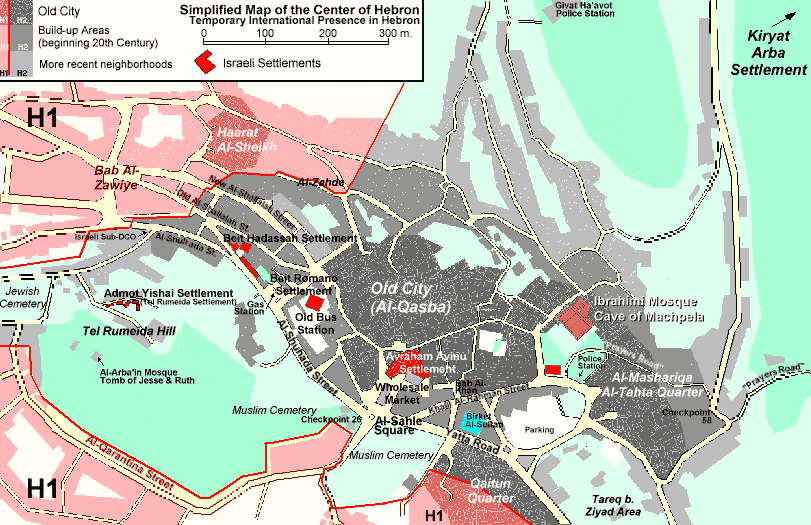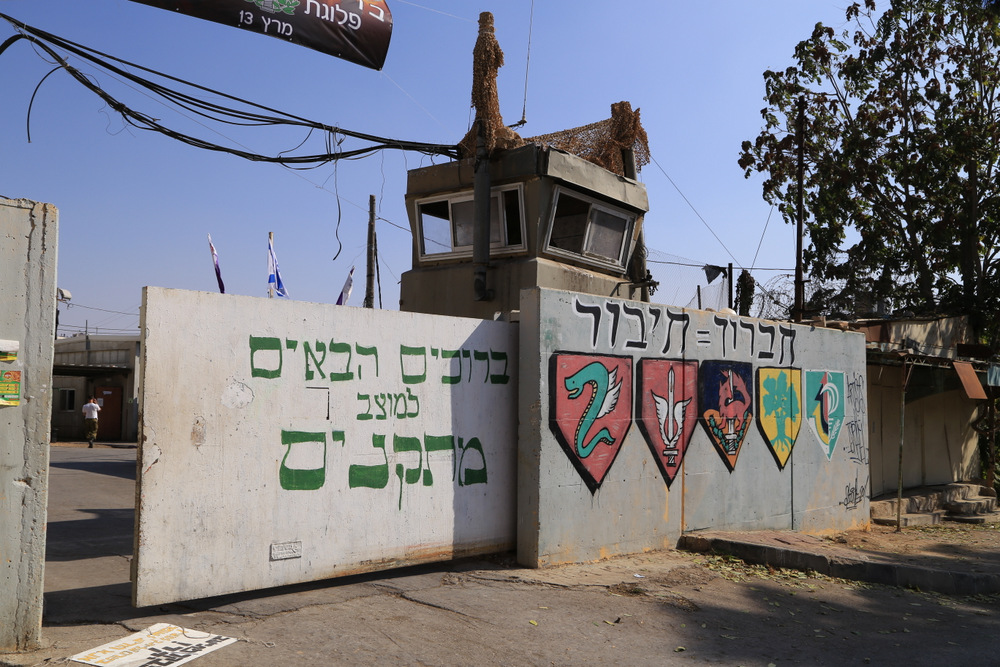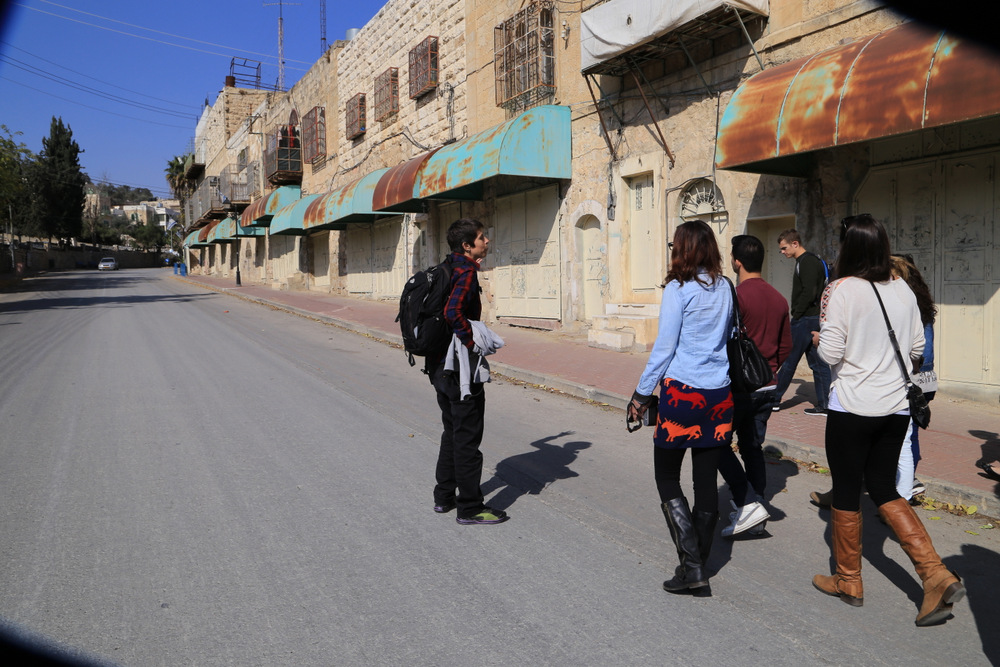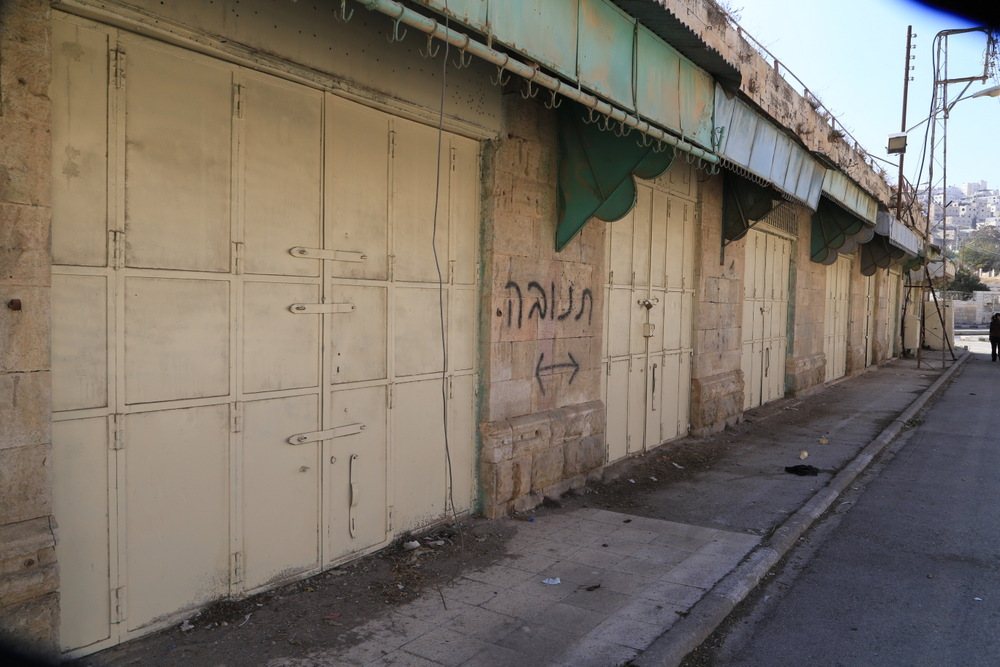Palestinians unite to demand 'Open Shuhada Street'
Palestinians marched today in Hebron to #OpenShuhadaSt
From Hebron- Youth Against Settlements
Sent by Popular Struggle Coordination Committee. Ramallah
February 21, 2014
Five people were detained today in Hebron three of which have been released and two are still in prison, and more than 13 were injured during the annual Open Shuhada Street protest.
The protest organized by Youth Against Settlements in Hebron comes in memorial of 20 years since the Ibrahimi Mosque massacre.
A cameraman for BT’selem was injured with a rubber bullet in the head, and a Palmedia journalist with a plastic coated steel bullets also in the head.
The Demonstration started form Ali-Bakka mosque from the eastern entrance to Shuhada-street. According to Youth Against Settlements at people at the protest 2,000 demonstrators participated in this demonstration. The protest was attended by popular resistance activists, participants from all around the country, the governor of Hebron Kamel Hmeid, and a member of the legislative council Mustafa Barghuthi, and representatives of the Islamic and national parties in the city of Hebron all took part in today’s protest.
Israeli occupation forces attacked the protest brutally as it was dispersed in the first 5 minutes. When demonstrators reached to Shuhuada St. entrance the soldiers started firing loads of stun grenades and teargas towards protesters. Protesters were also physically attacked. Five Palestinians were arrested.
Coordinator of Youth Against the Settlements Issa Amro stated that Israeli forces chased down the protesters towards Bab Alzawya in the city centre while firing rubber bullets towards protesters.
Several protesters suffered from suffocation from teargas and rubber bullets injuries and few from plastic coated steel bullets. Youth Against Settlements reported 13 injuries amongst protesters.
Local activists Tamer Al-Atrash, Issa Amro, Mohammad Zoughayer, Farid Al-Atrash and Ahmad Zhur were attacked by Israeli forces during the protest today.
Today’s protest was to demand the reopening of Shuhada Street which has been shut down for Palestinians in years. Participants condemned the Israeli Apartheid policies implemented against Palestinians and especially those living in the old city of Hebron. A call was announced for the international community to apply more pressure on Israeli occupation government to reopen Shuhada Street and the shut down shops on it.
This protest comes in launching of a whole campaign demanding the opening of Shuhada Street. 45 activities are planned to take place worldwide with the campaign and 75 other activities in solidarity with Hebron.
Media contact: Issa Amro- 0599340549

Map of central Hebron. Shuhada Street runs between the old town and the green area that houses the muslim cemetery and mosque – and the Jewish tomb of Jesse and Ruth, settlement of Admot Yishai. Map from Jewish Virtual Library.
Palestinians demand Shuhada St. reopened after 20 years
From +972
February 21, 2014
In a rare, united political front, Palestinian protesters try to reach Hebron’s segregated Shuhada Street but are confronted by Israeli army and police. Five are arrested and a B’Tselem researcher is hit in the head with a rubber-coated bullet.
About 1,000 Palestinians from all political parties, joined by Israeli and international activists, marched through the streets of Hebron Friday afternoon demanding to reopen the city’s formerly central commercial street. Shuhada Street has been closed to Palestinians movement for the better part of 20 years since the Cave of the Patriarchs/Ibrahimi Mosque Massacre.
The procession started at the central mosque in the Palestinian-controlled part of Hebron’s old city around noon and quickly arrived at the army checkpoint stopping Palestinians from entering Shuhada Street. Within seconds the scene ignited with stun grenades and tear gas canisters thrown by soldiers and police at the protestors and stones flying in the opposite direction. The vast majority of demonstrators retreated immediately but a few stayed and tried to cross over through the army lines. Many were beaten and four five were arrested before this group also turned around. [Update: Youth Against Settlements in Hebron say three of the detainees were later released]. The demonstration went on for another hour with small pockets of protesters trying to regroup and march on to the checkpoint again, each time answered with more “crowd dispersal” weapons and police chasing them back into the city. Eventually the organized actions faded away, leaving groups of youths setting tires on fire and confronting soldiers for a few hours longer.

Demonstrators scattering as stun and tear gas grenades are fired into the crowd. Photo by Yotam Ronen / Activestills
Several demonstrators were lightly wounded during the protest. The worst injury was received by B’Tselem’s Hebron field researcher, Musa Abu-Hashash, who was shot with a rubber coated bullet that grazed his head. He was hospitalized for several hours. According to B’Tselem spokesperson Sarit Michaeli, Abu-Hashash was walking in an area with no confrontations and was wearing a clearly marked, blue B’Tselem vest.
As several organizers mentioned at the end of the protest, the demonstration was especially important in three main aspects: first, it showed a rare example of inner-Palestinian partnership. In previous years the “Open Shuhada” campaign was run by Youth Against Settlements, which is more affiliated with Fatah, and separately, by the Defense Committee, a coalition of left-wing parties (PFLP, DFLP and the People’s Party). This is the first time that the different factions united for one demonstration. The second point organizers stressed was the important partnership between Palestinians and Israelis, a partnership based on anti-colonialist action and not empty words. Thirdly, and this was of particular importance to the Defense Committee people, demonstrators carried signs and chanted calling on John Kerry to either speak out against all illegal Israeli settlements and demand an end to colonization as part of the peace process – or leave the area altogether as his current proposals would thereby contribute nothing toward peace.

At the end, several youths started burning tires. Photo by Yotam Ronen / Activestills.
Ghost town: A tour of downtown Hebron, 19 Nov. 2013
Photo essay by B’TSelem

Foreground: Military guard tower at Aharon Gross Square. The square is named for a yeshiva student killed by Palestinians in 1983. Background: the Palestinian neighbourhood of Abu Sneineh. The military does not allow Palestinians to enter the square which leads to a-Shuhada St., a main street.

Military outpost on the site of Hebron’s central bus station, which the military closed in the early 1980s. There are also settlers who live in the outpost.

A group of American tourists is shown Shuhada St., one of the main roads in downtown Hebron. Israel’s security forces do not allow any Palestinian traffic in the area. Palestinians, even pedestrians, are not allowed to take the road reserved for settlers. The military has blockaded the doors of the buildings that face the street, forcing the few Palestinians still living there to find an alternative way to exit their homes.

Row of Palestinian stores on a-Sahleh St, Hebron. The stores were shut down by the Israeli military about ten years ago.
Cement wall built by the military to divide a-Shuhada St. from the Qasbah of Hebron.

Link: Open Shuhada Street, Hebron February 25, 2010



